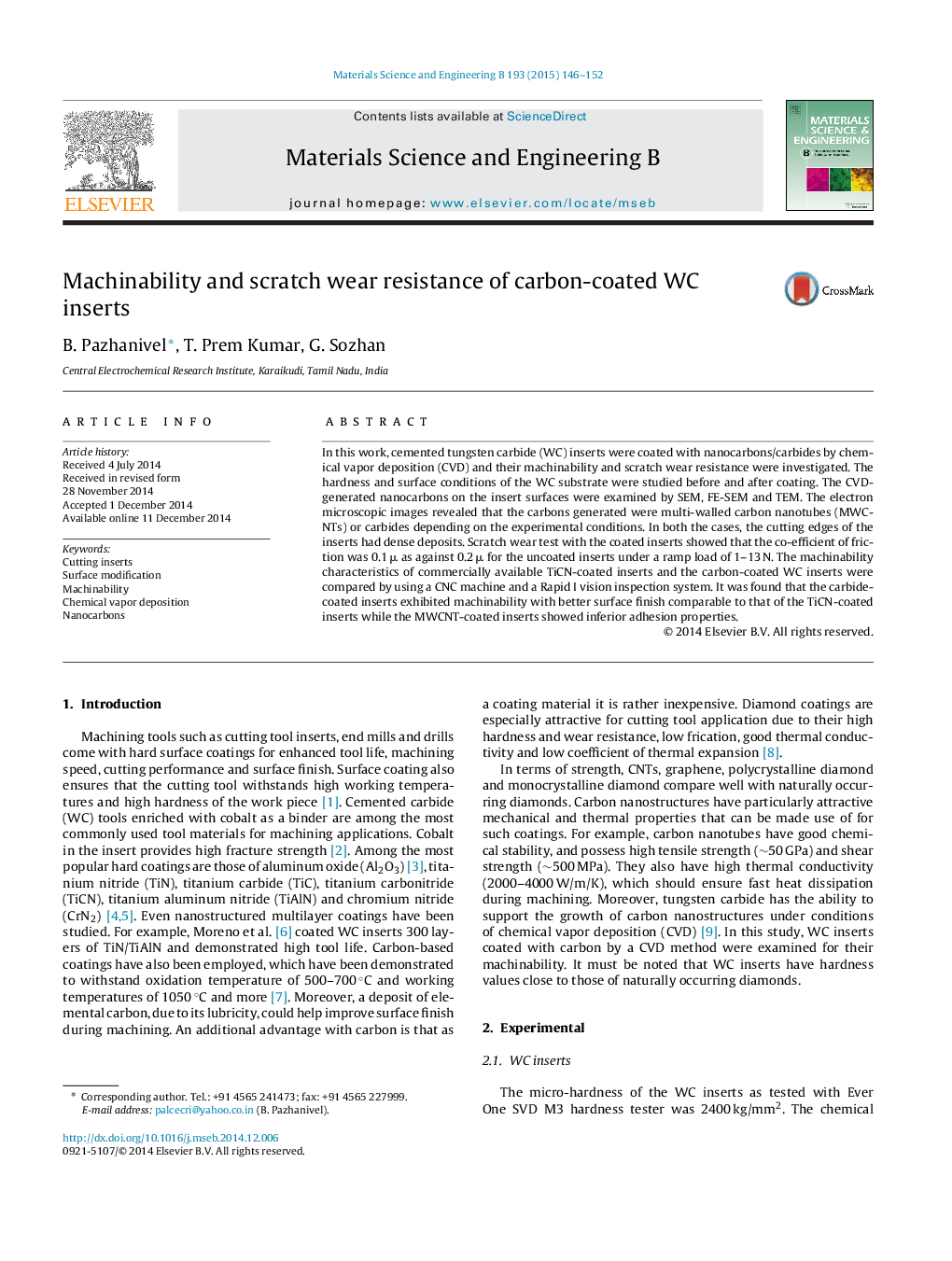| Article ID | Journal | Published Year | Pages | File Type |
|---|---|---|---|---|
| 1528542 | Materials Science and Engineering: B | 2015 | 7 Pages |
•Cemented WC inserts were coated with carbon by CVD.•The deposits were either loosely held MWCNTs or adherent carbides.•Co-efficient of friction (ramp load; 1–13 N); 0.2 and 0.1 μ, respectively, for the uncoated and carbide-coated inserts.•The carbide-coated insert exhibited better machinability and surface finish than a commercial TiCN-coated insert.
In this work, cemented tungsten carbide (WC) inserts were coated with nanocarbons/carbides by chemical vapor deposition (CVD) and their machinability and scratch wear resistance were investigated. The hardness and surface conditions of the WC substrate were studied before and after coating. The CVD-generated nanocarbons on the insert surfaces were examined by SEM, FE-SEM and TEM. The electron microscopic images revealed that the carbons generated were multi-walled carbon nanotubes (MWCNTs) or carbides depending on the experimental conditions. In both the cases, the cutting edges of the inserts had dense deposits. Scratch wear test with the coated inserts showed that the co-efficient of friction was 0.1 μ as against 0.2 μ for the uncoated inserts under a ramp load of 1–13 N. The machinability characteristics of commercially available TiCN-coated inserts and the carbon-coated WC inserts were compared by using a CNC machine and a Rapid I vision inspection system. It was found that the carbide-coated inserts exhibited machinability with better surface finish comparable to that of the TiCN-coated inserts while the MWCNT-coated inserts showed inferior adhesion properties.
